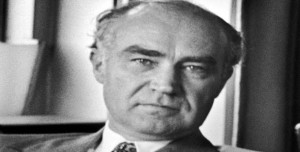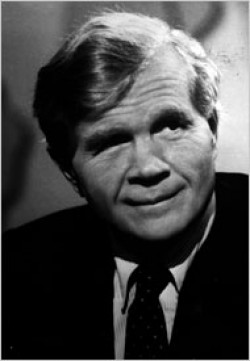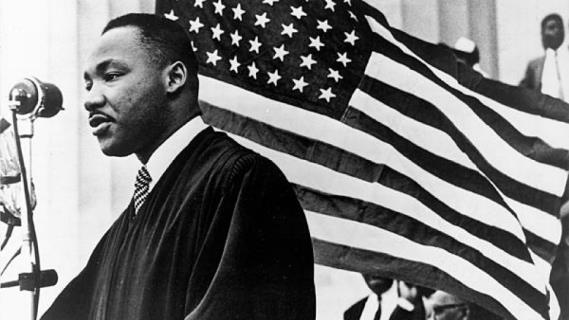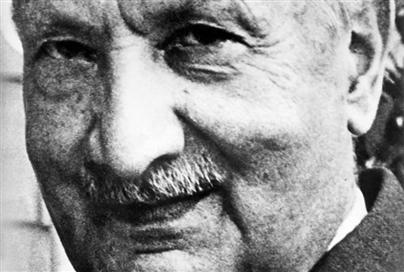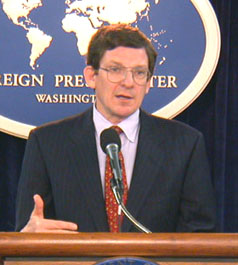Alex Constantine - July 27, 2010
Editor's caveat: Henry Luce was an American fascist from the Hitler-financing Morgan syndicate, and after the creation of the CIA in 1947, a ranking Operation Mockingbird propagandist. Typically, in the period between the "Great" wars, George Seldes noted in Facts and Fascism: "In its July, 1934, issue, a song of praise for fascism, Fortune magazine (owned by Henry Luce, a Morgan partner, and other powerful and wealthy Americans) told of the great corporations and how they progressed under Mussolini. ... " (Actually, Seldes reported, Mussolini flourished under the control of the corporate sector, as the dictator himself acknolwedged.) The book under review here, The Publicist, was written by the son of Mockingbird David Brinkley, and is a slickly-spun, elitist tribute to one of America's most sinister perception managers. - AC
" ... [Time magazine's] editors defined their audience as people who were unwilling, or unable, to understand complex issues. By catering to that inclination, Time -- and its imitators and successors -- no doubt also perpetuated and enabled it, producing a reading public that was increasingly lax and uncritical. ... Brinkley argues otherwise, noting that Luce merely responded to contemporary desires, conjuring up a publication that was 'almost perfectly designed to respond to several of the most important social changes of its era.' ... "
By Thai Jones
Monthly Review | July 13, 2010
A starlet in a strapless dress smiles on the cover of the February 17, 1941, issue of Life. Then, there are ten pages of ads: Oldsmobile, Knox Gelatine, Bendix automatic home laundry, Birds Eye Frosted Foods. Further in, between one photo essay on iceboating and another on a woman racecar driver, there is an editorial, "The American Century," written by the magazine's publisher, Henry R. Luce.
The essay's main purpose is to persuade Life's readers to join the war in Europe. Corollary to this plea, Luce outlines his ambitions for the peace. The United States will no longer flinch from global hegemony; it must accept its proper place at the head of nations. Luce is clear on this. When it comes to details, he is vague, and at times contradictory. "America cannot be responsible for the good behavior of the entire world," he concedes at one point. "We must undertake now to be the Good Samaritan of the entire world," he asserts soon after. But, the piece is remembered neither for its insights, nor for its incoherence. It is remembered for its title. Like Mark Twain's novel, The Gilded Age, "The American Century" bestowed a name on an historical era.
How apt it is that Luce's most significant literary contribution was a catchphrase, rather than an idea. Time -- which he co-founded at the age of 25 -- dedicated itself to avoiding nuanced thought. The magazine did not promote dissenting voices, nor did it claim objectivity. It presented opinions -- Luce's opinions, usually -- as facts, and then condensed them into truculent 200-word briefs. Busy readers could flip through Time for half an hour each week to absorb the worldview of its editors. And millions did. John F. Kennedy gave it his "regular and careful" attention. "I'm obsessed by Time Magazine," wrote Allen Ginsberg, in his poem America. "I read it every week. Its cover stares at me every time I slink past the corner candystore."
Time, and its successors -- Fortune, Life, and Sports Illustrated -- made for the largest publishing enterprise in history. Promoting the ideological agenda of a single man, they gave Luce a voice and reach that Americans could neither avoid nor ignore. The credibility of this voice, and the effectiveness of its reach, are the subject of Alan Brinkley's new biography, The Publisher: Henry Luce and His American Century (Alfred A. Knopf, $35).
A leading historian of the American Century, Brinkley is the author of several key texts on the Great Depression and the New Deal. A previous book, Voices of Protest, offered a joint biography of Father Coughlin and Huey Long, so this intimate portrait of Luce is a fitting sequel. But Brinkley also has a stake in the history of journalism. The son of David Brinkley -- the pioneering newscaster -- Brinkley is particularly familiar with the glory and power that emanated from the media at mid-century. Luce's family members eased his access to corporate archives and offered a first look at a trove of personal correspondence. His interviews with Luce's colleagues and relatives began nearly twenty years ago and spanned a period of more than a decade.
This labor has revealed a Luce whose unshakeable sense of purpose made him simultaneously a formidable publicist and a myopic intellectual. He attempted to mold his readers to his own idiosyncratic beliefs: liberal on social issues, conservative on economic ones, and a mad dog about foreign policy. As for the magazines, they brought the wealth and fame he coveted, but -- despite their huge circulations -- they never quite gave him the influence he desired. And, they certainly did not bring happiness.
"The Largest Magazine Publishing Business in the World"
... The son of Presbyterian missionaries, he was born in China, in 1898. During a childhood spent in isolated Westernized enclaves, he acquired "an almost uncritical enthusiasm" for the United States -- a place he would not visit until he was seven years old. The other mainstays of his worldview developed during his progression through prep school, Yale, and Oxford. Usually among the poorest students at each of these institutions, he was always the most ambitious and successful. His ability to attain academic and social honors was outstripped only by his need to pity himself and begrudge the insouciant affluence of his peers. When he graduated, it was with the belief that wealth was necessary, but only as a means to an end; success in business was a man's highest attainment, because it brought the opportunity to participate in the events of the world.
Out of college, Luce -- and his co-founder, Briton Hadden -- chose journalism as the most promising route to realize these ambitions. The young entrepreneurs surveyed their competition and found a vacant niche. The Hearst and Pulitzer dailies, with their sensationalist headlines and lurid illustrations, pandered to working-class "gum-chewers." Serious newspapers, on the other hand, were wordy and pretentious: "People have to think too hard to read them." The Times, they concluded,was "unreadable." No publication yet catered to "America's most important and interesting class -- the Younger Business Executive -- young in years -- young in spirit and young in outlook."
They considered naming their projected publication Facts, but eventually settled on Time. Fun and opinionated, sleek and young, the magazinepremiered on March 2, 1923, and was almost immediately profitable. Targeting an audience -- "the illiterate upper classes, the busy business man, the tired debutante" -- that was too harried, or callow, to follow the newspapers, Time provided its readers just enough information to uphold their end of a dinner-table conversation.
Brevity determined the prose. Timestyle -- or Timese -- was notorious for its neologisms, including "cinemactor," "newscast," and "newsmagazine," and for importing terms such as "socialite" and "pundit." It was particularly adept at designating historical events. While its editor-in-chief suggested "The American Century," his subordinates also dubbed the great conflict of mid-century "World War II" and suggested the romantic label of "Camelot" for the years of the Kennedy presidency.
The editors defined their audience as people who were unwilling, or unable, to understand complex issues. By catering to that inclination, Time -- and its imitators and successors -- no doubt also perpetuated and enabled it, producing a reading public that was increasingly lax and uncritical. The shortening of the American attention span had begun; from Time to the tweet, one might say, was not so far a slide. Brinkley argues otherwise, noting that Luce merely responded to contemporary desires, conjuring up a publication that was "almost perfectly designed to respond to several of the most important social changes of its era . . . the increasing pace of modern life, the growing nationalization of commerce, and the need of middle-class people to know much more about the nation and the world."
Fortune followed in 1930, Life -- the most popular magazine in history -- in 1936. These journals represented a new escalation in readership and influence, but popular periodicals had existed before. Mid-nineteenth century readers had subscribed to Harper's, or the Atlantic Monthly. Circulations then expanded dramatically in the early-twentieth century. McClure's and Outlook had been required reading in the Luce household, while the Saturday Evening Post had an audience of two million by the 1920s. With this history it is difficult to pinpoint the precise nature of Luce's innovation. Time Inc. may have furthered a going trend, transforming a mass media into a massive media. But, magazine circulations tended to rise in tandem with the nation's expanding middle class, and the numbers amassed by Luce's journals merely reflected the continued growth of the nation's white-collar sector.
If Luce's magazines were not wholly unprecedented, then, he nevertheless defined his publications against precedents set by earlier journalistic traditions. The inaugural issue of Fortune featured a fawning, bloodless appreciation of the Swift Meatpacking plant in Chicago -- the same factory that Upton Sinclair's Junglehad exposed a generation earlier. This was no coincidence, writes Brinkley, but rather "a deliberate effort to draw a contrast between the hostile muckraking of the Progressive Era and the more professionalized journalism of Luce's world. Fortune's Swift was no longer a 'jungle' but a model of modern progressive technology."
Muckraking journalists had presented a critique of the corporate influence, urban squalor, and political corruption that dominated American society. Works by such writers as Sinclair, Lincoln Steffens, and Ida Tarbell galvanized an uprising of middle-class reform and still stand as hallmarks of investigative reportage. In-depth and at-length, these pieces represented everything that Time and Life renounced. The muckrakers were suspicious of the wealth that industrial production had provided for the few, and they were outraged at the poverty it had created for the many. Luce dedicated himself to celebrating the prosperity and ignoring the hardship.
Life, especially, with its photo-essays, became the relentless promoter of "affluence, consumerism . . . patriotism, stable nuclear families, and male 'breadwinners.'" Its subject was the American middle class. "Large elements of society were either missing from the pages of Life or were portrayed in ways that made them compatible with the magazine's . . . outlook." The hardships of the Great Depression were largely ignored. Immigrants and minorities rarely appeared, and if they did they were usually striving to join the bourgeoisie, "embracing the 'American way of life,'" or somehow "entering the middle-class through hard work or philanthropy."
Of all the images that proclaimed the advantages of American life -- the 1955 Chryslers, the kitchens of tomorrow -- none was more effective than the female form. "I'd like to see a round-up on the subject of GIRLS," Luce instructed his editors during World War II. Not surprisingly, the stockinged legs, and not the sailor, are foregrounded in Life's most famous photograph -- which is also, probably, the best known magazine photo of all time -- Alfred Eisenstaedt's "V-J Day in Times Square."
His company had made Luce a "titan" while he was still in his thirties, the owner of, and directing intelligence behind, "the largest magazine publishing business in the world." His status gave him a royal lifestyle, world travel, acquaintance with political leaders and intellectual stars. But, Luce had too much success, too soon, reinforcing a tendency to believe he himself knew best. Wherever he went, and whomever he spoke with, he could only see what he wanted to see, hear that which he already knew.
"The No. 1 Issue: Soviet Communism"
Of all the prominent and talented writers, editors, and photographers who worked for Time Inc. -- James Agee, Robert Capa, Archibald MacLeish -- none enjoyed more of Luce's confidence and support than Whittaker Chambers, whose diatribes against radicals and intellectuals earned him a promotion to Foreign News editor. Luce backed him despite near-universal opposition within the company, until the furor over his accusations against Alger Hiss became Time's "No. 1 public relations problem," and Luce curtly dismissed him.
"Communism is the most monstrous cancer which ever attacked humanity," Luce wrote one of his correspondents, in 1949, "and we shall do our best, however feeble, to combat it at all times and all places." The best place to start, he decided, was within the offices of Time Inc. He banned the term "leftist" because he believed it was a gentle euphemism for "Communist," and purged several fellow-travelers from the staff. Then, with his own company free from progressives, he didn't concern himself thereafter with the outcry over subversive infiltration, which he considered a scapegoat and distraction. "The fact is," he wrote during the Truman years, "that Communism is no longer a real issue, even indirectly, in America."
Luce was personally repelled by the demagogue McCarthy, whom he considered "a crude and coarse man." In October 1951, two and a half years before Edward R. Murrow's famous rebuke of McCarthyism on TV's "See It Now," Time ran a critical cover story of the nation's leading witch-hunter, accusing him of hitting "low blow after low blow," and concluding: "There are never any circumstances which justify the reckless imputation of treason or other moral guilt to individuals in or out of office."
But, he reserved that modicum of restraint for domestic radicals; when it came to the Cold War, Luce practiced into-the-brinkmanship. "The No. 1 issue: Soviet Communism," was the directive he gave his editors. Containment, an aggressive policy strategy that led the United States into two major wars, and innumerable skirmishes and interventions, he decried as "too timid." His strategic policy was not subtle. "Luce wants the Big War," a subordinate noted, "I suspect he'd be glad to war on USSR tomorrow." His goal was to "beat the bejesus out of Stalinism," and to achieve it he advocated "plastering Russia with 500 (or 1000) A bombs."
Born in China, he believed in a special relationship connecting the Kuomintang and the United States -- with himself, of course, as lead go-between. Luce believed that Chiang Kai-shek had exerted "greater influence than any other single human being of our age," and put his face on the cover of Time on no less than ten occasions between 1927 and 1955. The Communist victory in 1949 was more than a defeat for U.S. policy, it was a "great betrayal" demanding explanation. For years, he harbored fantasies of rolling back the Red advance by aiding Chiang's recapture of the mainland. He hoped to expand the Korean War past the Yalu River into Chinese territory. A decade later, he speculated that the Vietnam War might provide the chance for a "confrontation with China in the right place at the right time."
Luce's anti-communism was significant because of his unique ability to foist his belligerence on his readers, but there was nothing remarkable about the all-too-familiar ideas themselves. The one notable aspect of Luce's ideology is the fact that he had never, apparently, doubted it for a moment in his life. His confidence in the superiority of liberal capitalism was imperturbable, in the Great Depression, during World War II, in the Cold War, during the Vietnam years. Many of his contemporaries had gone through crises of confidence before emerging as American apologists. Chambers had been a member of the Party. Walter Lippmann and Sidney Hook had dallied with radicalism during their college years, or as fellow travelers in the Popular Front period. Not Luce.
To have experienced the American Century without feeling a quiver of doubt concerning its central tenets, one would have had to be rich enough never to know the pinch of want, and obtuse enough to ignore its indisputable gaps and inconsistencies. Luce was both.
The Ideas of a Lifetime
The first half of The Publisher draws on previously unpublished personal letters between young Henry and his family. The correspondence reveals a manic striver, oscillating between narcissism and self-disgust. The adult Luce did not leave such an intimate record, but several colleagues and subordinates happened to have been conscientious journal keepers. Their observations of the boss more or less jibe with his own view of himself. He was "the creative genius of magazine journalism," while also being a meddling, mercurial, insufferable executive. For Luce, the next triumph would always be the one that would bring satisfaction; this was true both in his professional life, as well as in his romantic relationships, including his second marriage, to Clare Booth Luce. Success was the only salve, but no conquest or achievement ever proved enough to quiet his insecurities.
By 1960, Life's weekly circulation was approaching its peak of seven million. Time and Fortune continued to be profitable; Sports Illustrated, founded in 1954, was clearly on its way to being a success as well. If, as A.J. Liebling quipped, freedom of the press belongs to the man who owns one, then Henry Luce was surely that man. But, Alan Brinkley nevertheless finds his influence difficult to quantify. Even within his own magazines, Luce often had trouble asserting his perspective. And there is no case when his opinions decisively shaped world events. William Lloyd Garrison's The Liberator had made abolitionism a powerful political movement. Pulitzer and Hearst had catalyzed the Spanish-American War. Upton Sinclair's stomach-turning revelations led to the Pure Food and Drug Act. Woodward and Bernstein contributed to the disgrace of Richard Nixon. Luce, by contrast, usually spoke against the chorus, and was perennially out of step with the coming trend.
Instead of identifying political successes, Brinkley locates Luce's impact in the social realm. "Part of his considerable achievement," he writes, "was his ability to provide an image of American life that helped a generation of readers believe in an alluring, consensual image of the nation's culture." Thus, Brinkley connects Luce's American Century to the scholars of consensus, a group of academics of the 1940s and 1950s -- such as Lionel Trilling, Richard Hofstadter, and Louis Hartz -- who wrote during a period of national accord and extrapolated that momentary calm into a guiding principle of U.S. history and ideas. According to the consensus school, conflict was the aberration -- not the rule -- in a society that was defined by a liberal political economy and a middle-class culture. Such a conclusion could only be reached by extreme acts of willful blindness. During the 1950s, the Civil Rights movement stood as a refutation of national consensus, visible for anyone who cared to look. And, the conflicted 1960s put an end to any lingering doubt that the United States consisted of clashing races, genders, and political factions. Many consensus scholars eventually recanted. Again, not Luce.
Having already experienced the 1930s without acknowledging divisions and iniquities in U.S. life, ignoring the 1960s was easy. Luce's pat vision of The American Century was founded on the practical expedient of "avoiding the difficult questions." Too uncomfortable with himself to come to a conclusion and stick to it, but too committed to the idea of national consensus to realize its flaws, Luce spent his entire intellectual life fervently rehashing the same questions, and coming -- always -- to the same answer.
In 1920, Luce spoke at his Yale graduation on the subject of U.S. global influence. "When we say 'America' twenty years from now," he said, the words would signify "that America may be counted upon to do her share in the solution of every international difficulty, that she will be the great comrade of all nations. . . ." Twenty years later, Luce would again speak of the national destiny; in his essay on "The American Century" he used almost precisely the same language he had employed as a youth. Decades later -- just before his death, in 1967 -- he wrote that the United States was founded on "truths or hypotheses which are unqualifiedly universal. . . . It was and is the American task to take the lead in creating a new form of world order." For Henry Luce, these were the ideas of a lifetime. "In the last months of his life," writes Brinkley, "he was struggling with them still."
Thai Jones is author of A Radical Line: From the Labor Movement to the Weather Underground, One Family's Century of Consciencec.
http://mrzine.monthlyreview.org/2010/jones130710.html
